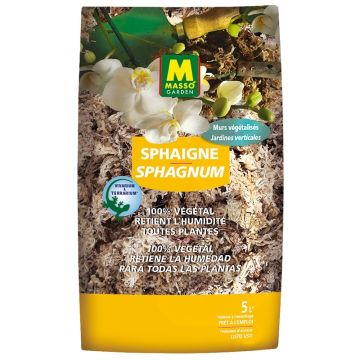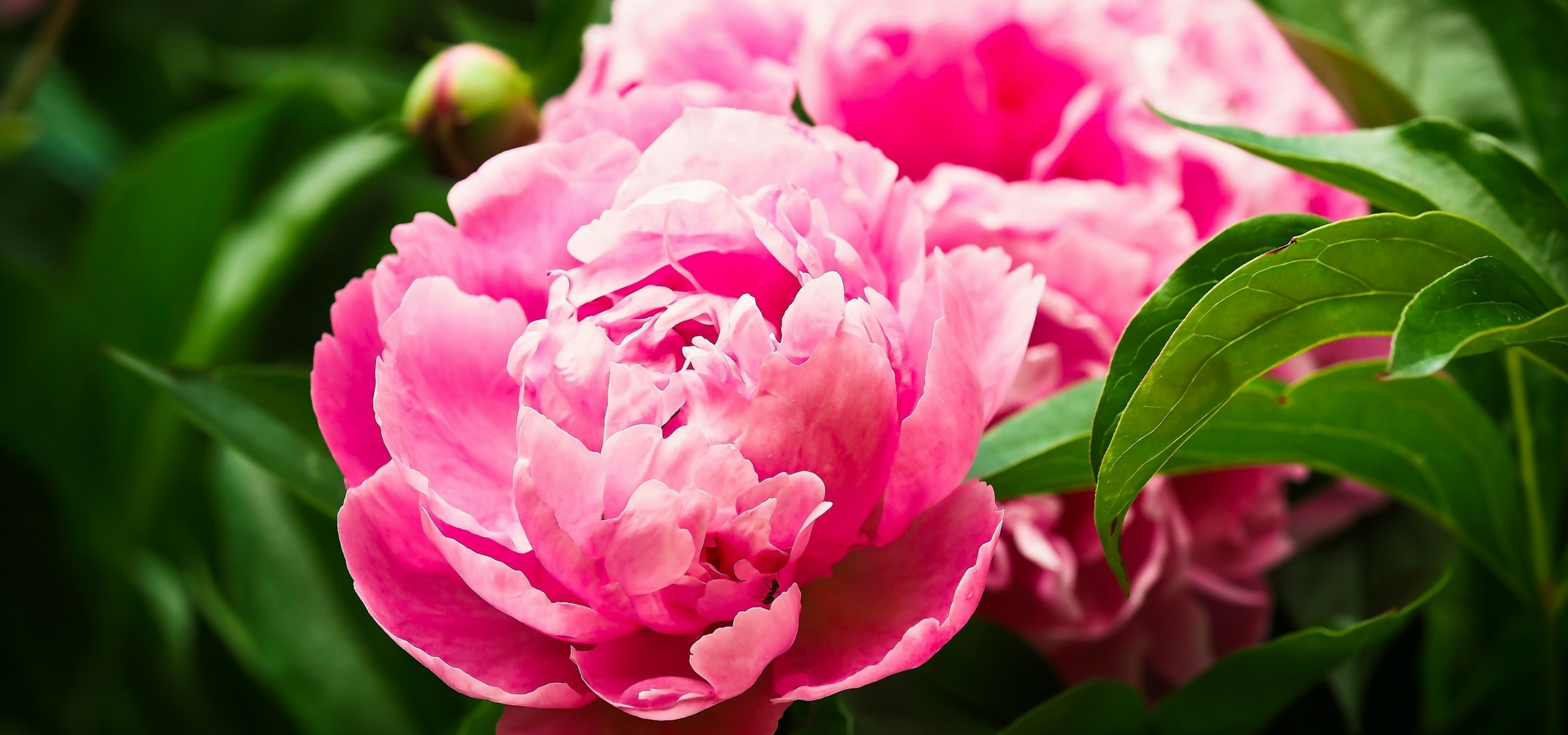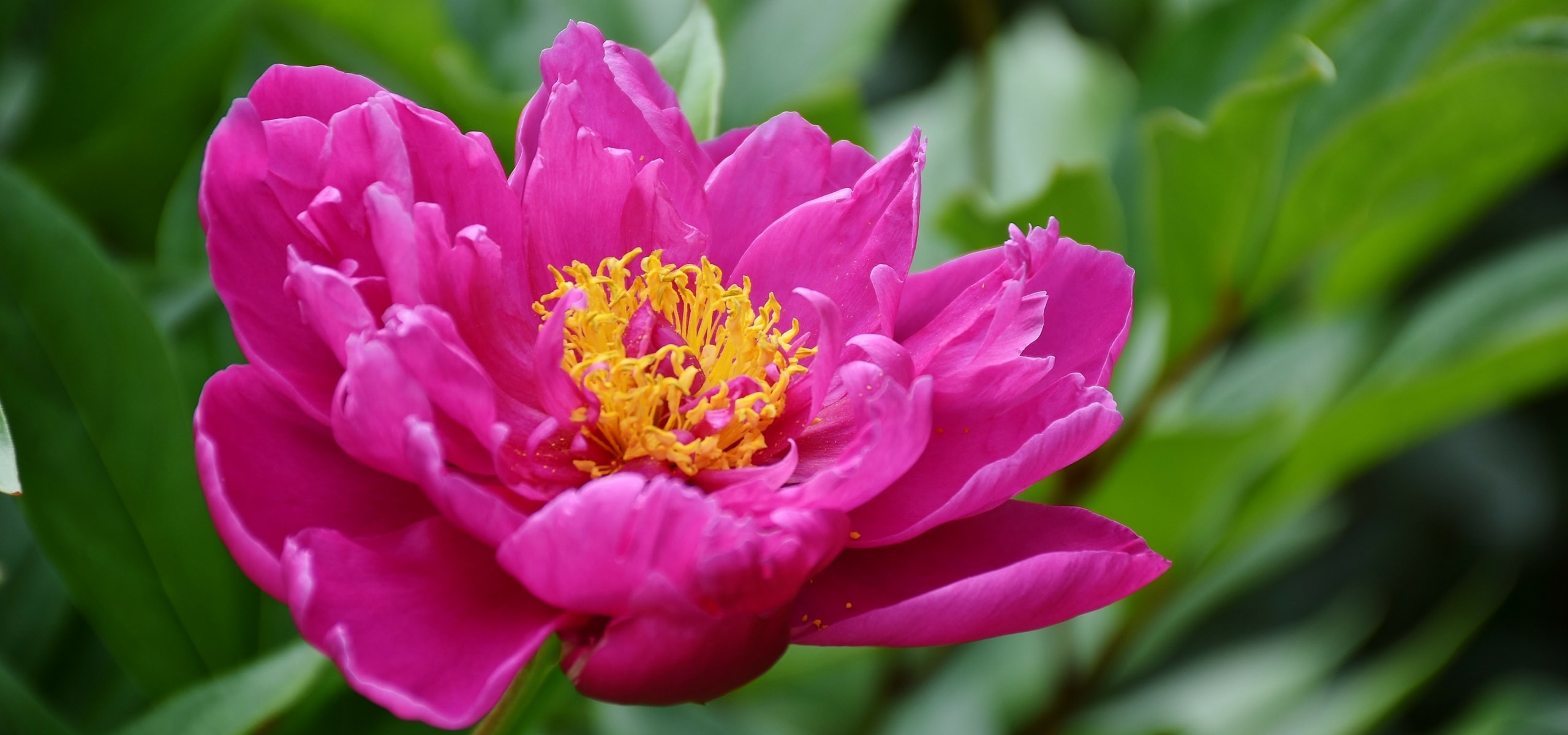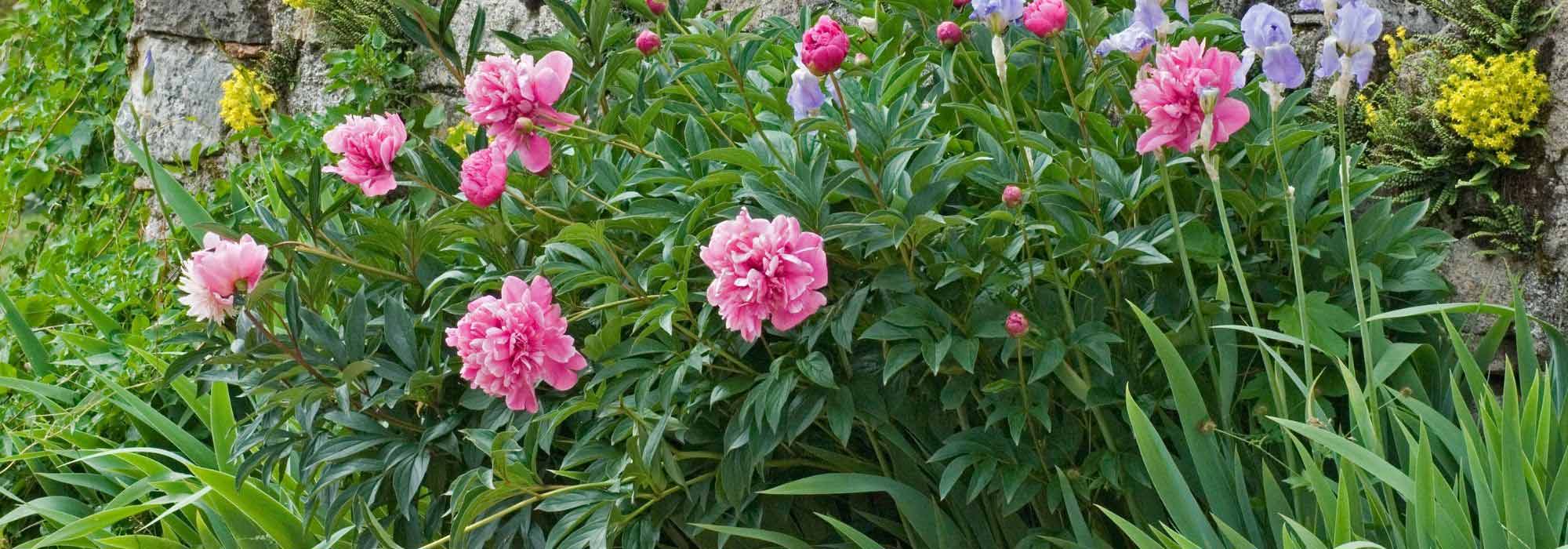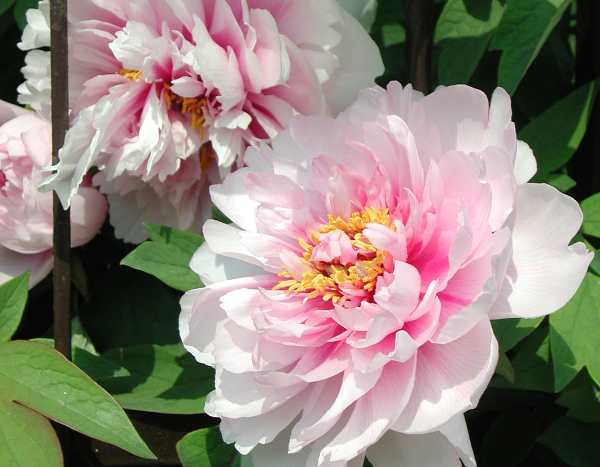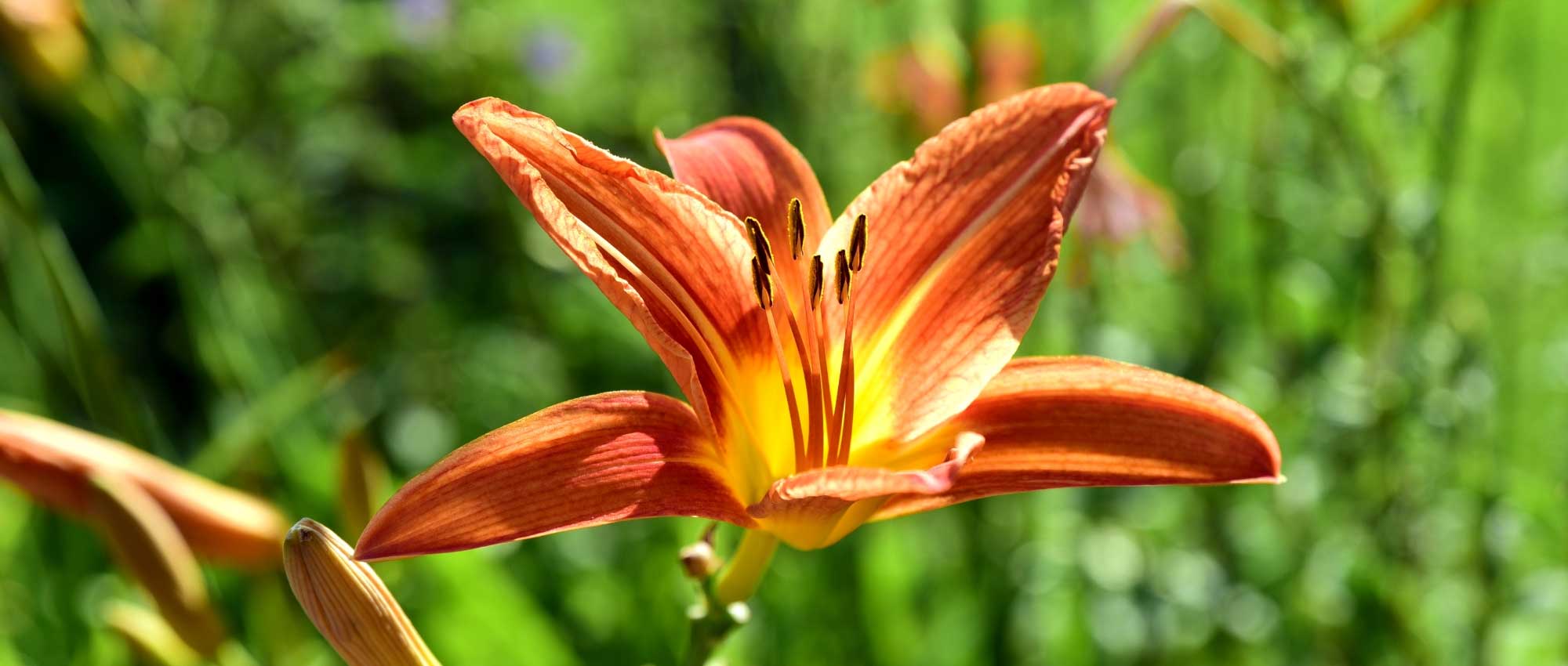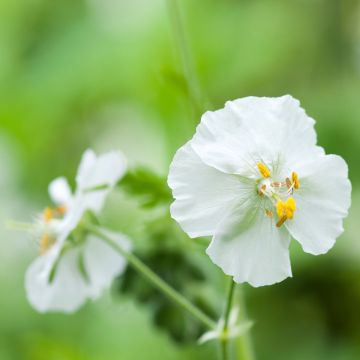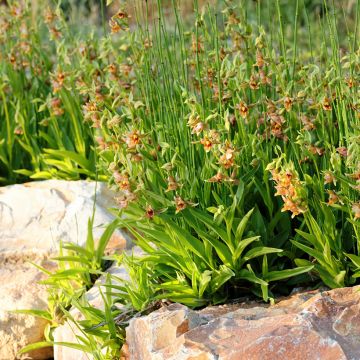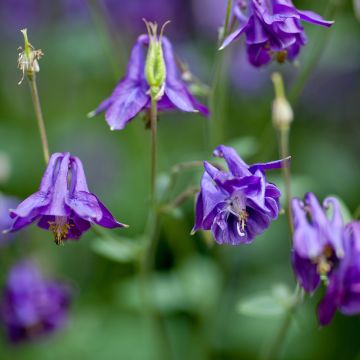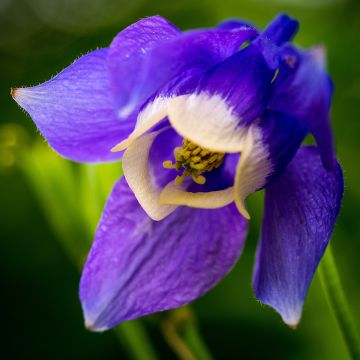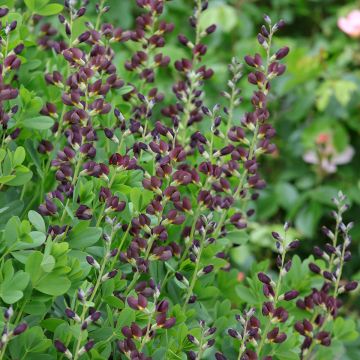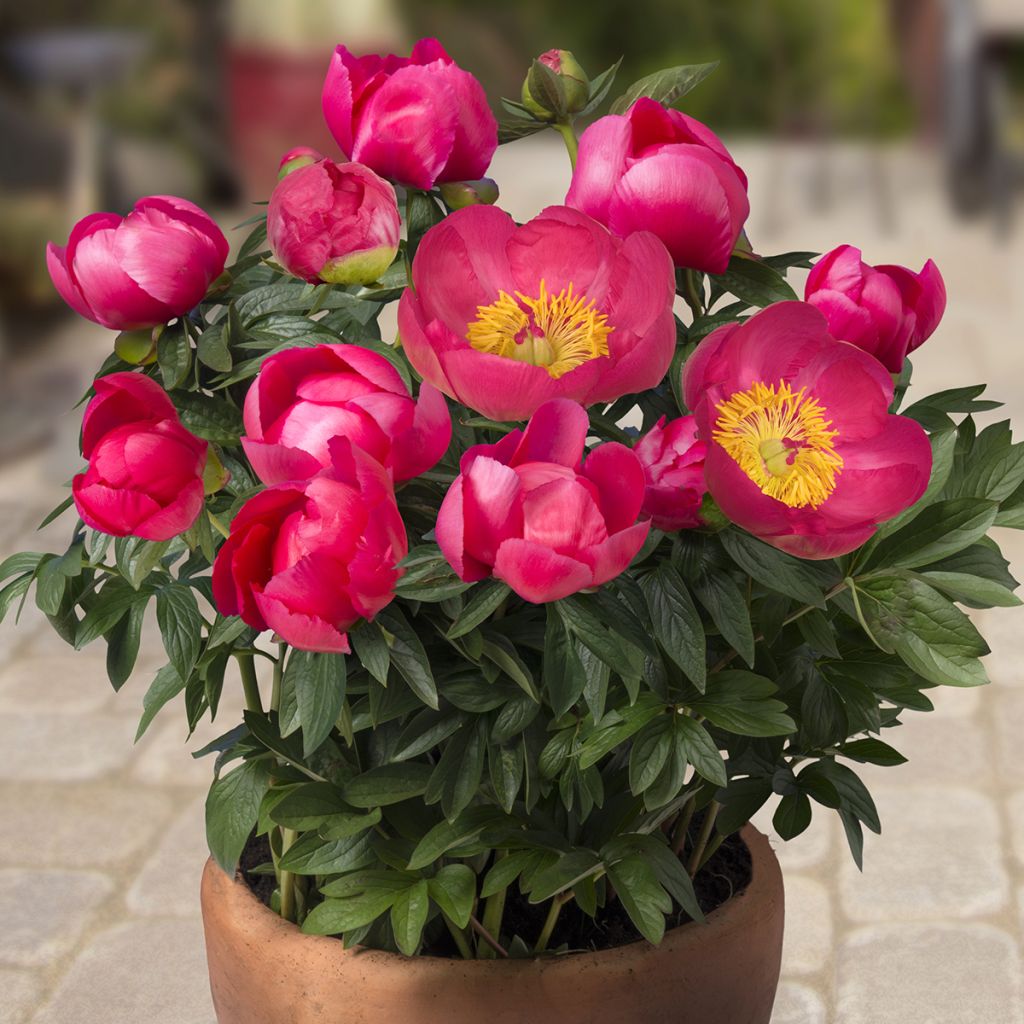

Paeonia lactiflora Oslo (Patio Peony Series) - Dwarf Peony
Paeonia lactiflora Oslo (Patio Peony Series) - Dwarf Peony
Paeonia x lactiflora Oslo
Chinese Peony, Herbaceous Peony
Special offer!
Receive a €20 voucher for any order over €90 (excluding delivery costs, credit notes, and plastic-free options)!
1- Add your favorite plants to your cart.
2- Once you have reached €90, confirm your order (you can even choose the delivery date!).
3- As soon as your order is shipped, you will receive an email containing your voucher code, valid for 3 months (90 days).
Your voucher is unique and can only be used once, for any order with a minimum value of €20, excluding delivery costs.
Can be combined with other current offers, non-divisible and non-refundable.
Home or relay delivery (depending on size and destination)
Schedule delivery date,
and select date in basket
This plant carries a 12 months recovery warranty
More information
We guarantee the quality of our plants for a full growing cycle, and will replace at our expense any plant that fails to recover under normal climatic and planting conditions.
Would this plant suit my garden?
Set up your Plantfit profile →
Description
The Patio Peony Oslo is a horticultural variety of Chinese Peony selected for its compactness, making it a perfect patio and terrace plant, producing splendid flowering pots. It flowers very early, beginning in the second half of April, depending on the climate and lasting until May. It produces large single flowers, of a pink tending towards magenta, which Anglo-Saxons rightly call cranberry rose, named after the small fruits of the blueberry family. The centre of yellow stamens further enhances the beauty of the floral corollas. It can also be grown in open ground in the garden; it appreciates sunny exposures and preferably moist yet well-drained soils. Its hardiness is beyond question.
The Peony, Paeonia in Latin, formerly classified among the Ranunculaceae, now has its own family, the Paeoniaceae, of which it is the sole genus. There are fewer than forty species, herbaceous or woody, including Tree Peonies (Paeonia suffruticosa), so prized by enthusiasts and collectors. The Chinese Peony (Paeonia lactiflora) is a perennial plant native to a wide area stretching from Southeast Siberia to Northeast China, which explains the excellent cold resistance of this plant. It forms a clump approximately 70 cm high, whose foliage completely disappears in winter. In spring, the buds located at ground level reactivate and regrow the aerial part, leaves and flowering stems. Cultivated for hundreds of years in China initially as a medicinal plant, the Chinese Peony was introduced to Europe around 1784 and had its heyday in the late 19th century.
The Patio Peony range is the result of selection work by a Dutch nursery and currently includes eight varieties of hybrid Chinese Peonies with limited development, intended to be planted and maintained in pots to adorn patios. Oslo is the most compact in the series, measuring 45 to 50 cm in height and as much in width. It forms a dense clump of deeply cut leaves with elliptical to lanceolate lobes, with a pointed tip. These leaves are dark green with a matte to slightly satiny surface. This dark vegetation truly serves as a setting for the pink flowering, tending towards magenta red, creating a strong contrast. This is further enhanced by the golden yellow centre, formed by the stamens and pistils of the same hue. The large cup-shaped flowers are of the single type and measure 8 to 10 cm in diameter. The dimensions of this variety are ideal for growing in a decorative pot, in which it will attract all eyes in spring from late April. If you plant it in the ground, its crown will gradually widen each year, so choose its location carefully from the start, as it dislikes being transplanted.
Paeonia lactiflora 'Patio Peony Oslo' is a true gem for ornamenting a terrace or patio. In the garden, you can also happily integrate it in the foreground of a varied bed or in an English-style mixed border. The small blue flowers of Brunnera sibirica (Siberian Bugloss) will harmonise well with those of your small Peony, as will the tiered flower spikes of a White Candelabra Primrose (Primula japonica 'Alba'), two plants that will allow you to create a contrast in form, size and colour. Also remember that, however superb it is, your Peony's flowering will not cover the entire summer, so pair it with plants with staggered flowering times, such as Daylilies whose star-shaped flowers will bloom all summer.
Flowering
Foliage
Plant habit
Botanical data
Paeonia
x lactiflora
Oslo
Paeoniaceae
Chinese Peony, Herbaceous Peony
Cultivar or hybrid
Planting and care
The Patio Peony Oslo, like all peonies, lives for a very long time and dislikes being moved, so careful consideration must be given to the right planting location. It enjoys sun, requiring at least six hours per day, and tolerates light shade, especially in warm climates. The best time for planting is spring or autumn. Plant the crown in deep, well-loosened soil that is properly drained. These plants appreciate soil fairly rich in organic matter, neutral to slightly acidic. They can tolerate some limestone and slight summer drought, but will always prefer damper conditions. They also need space and dislike competition from other species. Prepare a hole 50 x 50 x 50 cm, add a thin layer of sand or gravel at the bottom to drain the roots, mix organic fertiliser into your soil along with slightly acidic planting compost. Then partially backfill, position your plants and cover with three cm of soil above the buds. After planting, firm down and water thoroughly. Once established, this peony requires no watering at all in summer in most regions, as it enters dormancy. In hot and particularly dry summer climates, however, a thorough watering every two weeks will be appreciated.
Planting period
Intended location
Care
Planting & care advice
This item has not been reviewed yet - be the first to leave a review about it.
Similar products
Haven't found what you were looking for?
Hardiness is the lowest winter temperature a plant can endure without suffering serious damage or even dying. However, hardiness is affected by location (a sheltered area, such as a patio), protection (winter cover) and soil type (hardiness is improved by well-drained soil).

Photo Sharing Terms & Conditions
In order to encourage gardeners to interact and share their experiences, Promesse de fleurs offers various media enabling content to be uploaded onto its Site - in particular via the ‘Photo sharing’ module.
The User agrees to refrain from:
- Posting any content that is illegal, prejudicial, insulting, racist, inciteful to hatred, revisionist, contrary to public decency, that infringes on privacy or on the privacy rights of third parties, in particular the publicity rights of persons and goods, intellectual property rights, or the right to privacy.
- Submitting content on behalf of a third party;
- Impersonate the identity of a third party and/or publish any personal information about a third party;
In general, the User undertakes to refrain from any unethical behaviour.
All Content (in particular text, comments, files, images, photos, videos, creative works, etc.), which may be subject to property or intellectual property rights, image or other private rights, shall remain the property of the User, subject to the limited rights granted by the terms of the licence granted by Promesse de fleurs as stated below. Users are at liberty to publish or not to publish such Content on the Site, notably via the ‘Photo Sharing’ facility, and accept that this Content shall be made public and freely accessible, notably on the Internet.
Users further acknowledge, undertake to have ,and guarantee that they hold all necessary rights and permissions to publish such material on the Site, in particular with regard to the legislation in force pertaining to any privacy, property, intellectual property, image, or contractual rights, or rights of any other nature. By publishing such Content on the Site, Users acknowledge accepting full liability as publishers of the Content within the meaning of the law, and grant Promesse de fleurs, free of charge, an inclusive, worldwide licence for the said Content for the entire duration of its publication, including all reproduction, representation, up/downloading, displaying, performing, transmission, and storage rights.
Users also grant permission for their name to be linked to the Content and accept that this link may not always be made available.
By engaging in posting material, Users consent to their Content becoming automatically accessible on the Internet, in particular on other sites and/or blogs and/or web pages of the Promesse de fleurs site, including in particular social pages and the Promesse de fleurs catalogue.
Users may secure the removal of entrusted content free of charge by issuing a simple request via our contact form.
The flowering period indicated on our website applies to countries and regions located in USDA zone 8 (France, the United Kingdom, Ireland, the Netherlands, etc.)
It will vary according to where you live:
- In zones 9 to 10 (Italy, Spain, Greece, etc.), flowering will occur about 2 to 4 weeks earlier.
- In zones 6 to 7 (Germany, Poland, Slovenia, and lower mountainous regions), flowering will be delayed by 2 to 3 weeks.
- In zone 5 (Central Europe, Scandinavia), blooming will be delayed by 3 to 5 weeks.
In temperate climates, pruning of spring-flowering shrubs (forsythia, spireas, etc.) should be done just after flowering.
Pruning of summer-flowering shrubs (Indian Lilac, Perovskia, etc.) can be done in winter or spring.
In cold regions as well as with frost-sensitive plants, avoid pruning too early when severe frosts may still occur.
The planting period indicated on our website applies to countries and regions located in USDA zone 8 (France, United Kingdom, Ireland, Netherlands).
It will vary according to where you live:
- In Mediterranean zones (Marseille, Madrid, Milan, etc.), autumn and winter are the best planting periods.
- In continental zones (Strasbourg, Munich, Vienna, etc.), delay planting by 2 to 3 weeks in spring and bring it forward by 2 to 4 weeks in autumn.
- In mountainous regions (the Alps, Pyrenees, Carpathians, etc.), it is best to plant in late spring (May-June) or late summer (August-September).
The harvesting period indicated on our website applies to countries and regions in USDA zone 8 (France, England, Ireland, the Netherlands).
In colder areas (Scandinavia, Poland, Austria...) fruit and vegetable harvests are likely to be delayed by 3-4 weeks.
In warmer areas (Italy, Spain, Greece, etc.), harvesting will probably take place earlier, depending on weather conditions.
The sowing periods indicated on our website apply to countries and regions within USDA Zone 8 (France, UK, Ireland, Netherlands).
In colder areas (Scandinavia, Poland, Austria...), delay any outdoor sowing by 3-4 weeks, or sow under glass.
In warmer climes (Italy, Spain, Greece, etc.), bring outdoor sowing forward by a few weeks.
































